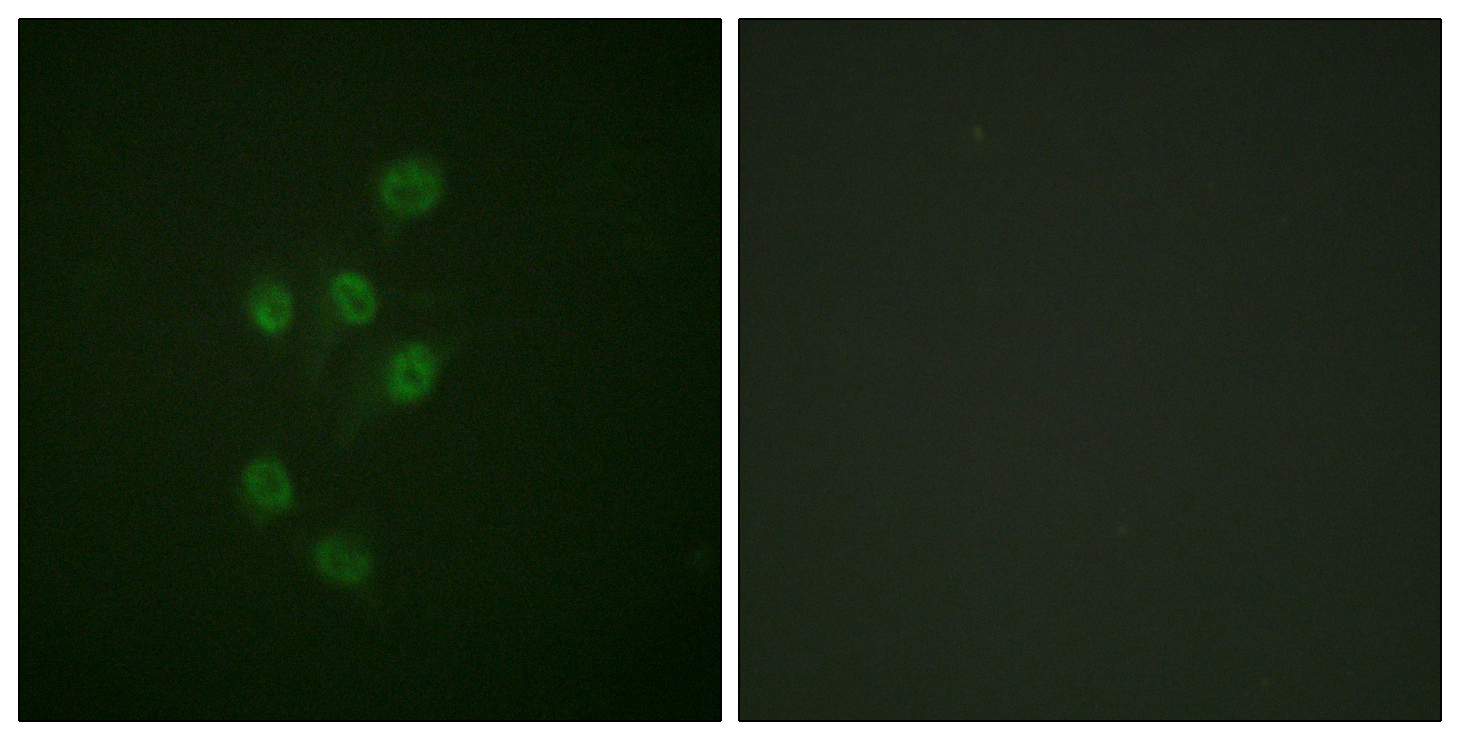SMAP45 Polyclonal Antibody
- 货号:YT4339
- 应用:WB;IHC;IF;ELISA
- 种属:Human;Mouse;Rat;Monkey
- 简介:
- >>Neutrophil extracellular trap formation;>>Thyroid hormone signaling pathway;>>Alcoholism;>>Viral carcinogenesis
- 蛋白名称:
- Histone deacetylase 3
- 免疫原:
- The antiserum was produced against synthesized peptide derived from human HDAC3. AA range:379-428
- 特异性:
- SMAP45 Polyclonal Antibody detects endogenous levels of SMAP45 protein.
- 组成:
- Liquid in PBS containing 50% glycerol, 0.5% BSA and 0.02% sodium azide.
- 来源:
- Polyclonal, Rabbit,IgG
- 稀释:
- WB 1:500 - 1:2000. IHC 1:100 - 1:300. IF 1:200 - 1:1000. ELISA: 1:20000. Not yet tested in other applications.
- 纯化工艺:
- The antibody was affinity-purified from rabbit antiserum by affinity-chromatography using epitope-specific immunogen.
- 储存:
- -15°C to -25°C/1 year(Do not lower than -25°C)
- 其他名称:
- HDAC3;Histone deacetylase 3;HD3;RPD3-2;SMAP45
- 背景:
- Histones play a critical role in transcriptional regulation, cell cycle progression, and developmental events. Histone acetylation/deacetylation alters chromosome structure and affects transcription factor access to DNA. The protein encoded by this gene belongs to the histone deacetylase/acuc/apha family. It has histone deacetylase activity and represses transcription when tethered to a promoter. It may participate in the regulation of transcription through its binding with the zinc-finger transcription factor YY1. This protein can also down-regulate p53 function and thus modulate cell growth and apoptosis. This gene is regarded as a potential tumor suppressor gene. [provided by RefSeq, Jul 2008],
- 功能:
- catalytic activity:Hydrolysis of an N(6)-acetyl-lysine residue of a histone to yield a deacetylated histone.,function:Responsible for the deacetylation of lysine residues on the N-terminal part of the core histones (H2A, H2B, H3 and H4). Histone deacetylation gives a tag for epigenetic repression and plays an important role in transcriptional regulation, cell cycle progression and developmental events. Histone deacetylases act via the formation of large multiprotein complexes. Probably participates in the regulation of transcription through its binding to the zinc-finger transcription factor YY1; increases YY1 repression activity. Required to repress transcription of the POU1F1 transcription factor.,PTM:Sumoylated in vitro.,similarity:Belongs to the histone deacetylase family. Type 1 subfamily.,subunit:Interacts with HDAC7 and HDAC9. Forms a heterologous complex at least with YY1. Intera
- 细胞定位:
- Nucleus . Cytoplasm . Cytoplasm, cytosol . Colocalizes with XBP1 and AKT1 in the cytoplasm (PubMed:25190803). Predominantly expressed in the nucleus in the presence of CCAR2 (PubMed:21030595). .
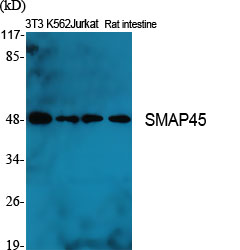
- Western Blot analysis of various cells using SMAP45 Polyclonal Antibody diluted at 1:2000
.jpg)
- Western Blot analysis of HepG2 cells using SMAP45 Polyclonal Antibody diluted at 1:2000
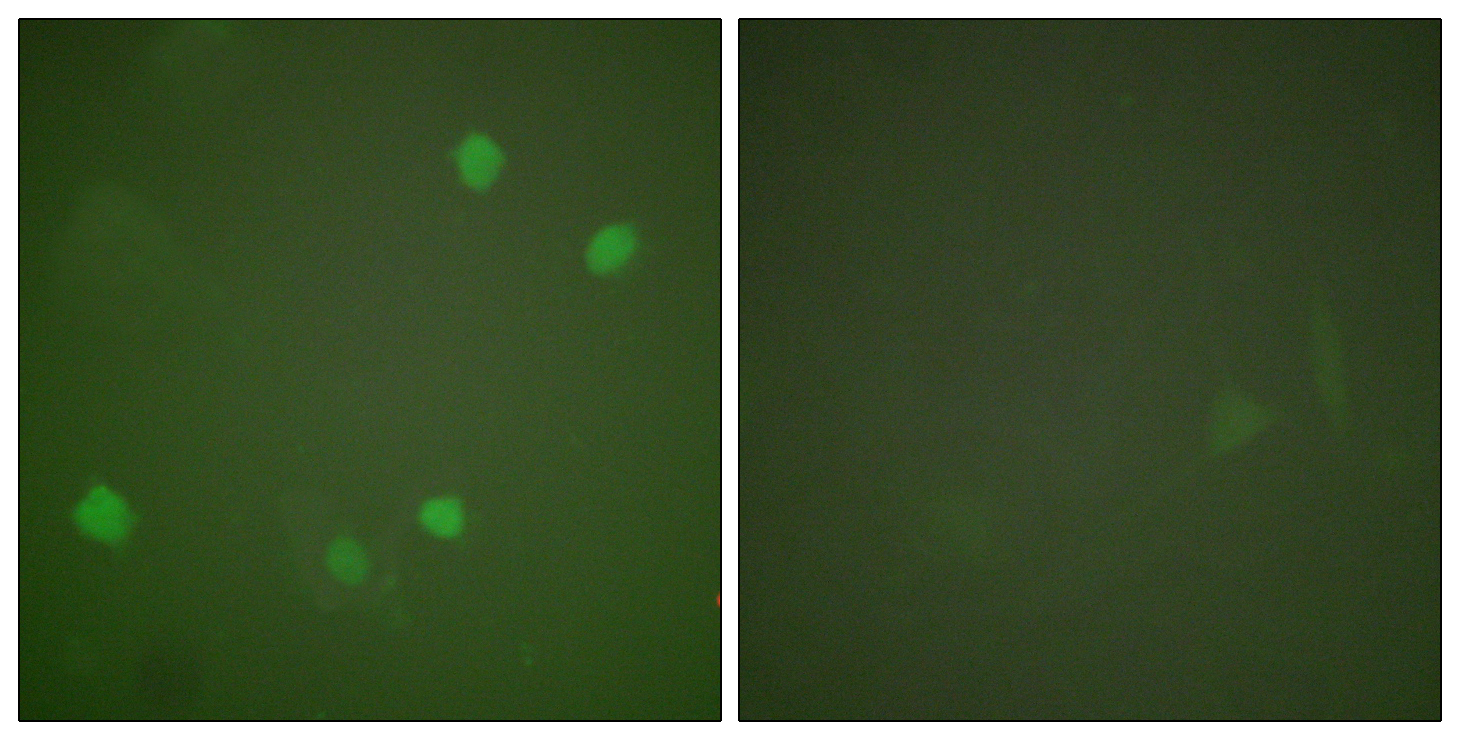
- Immunofluorescence analysis of COS7 cells, using HDAC3 Antibody. The picture on the right is blocked with the synthesized peptide.
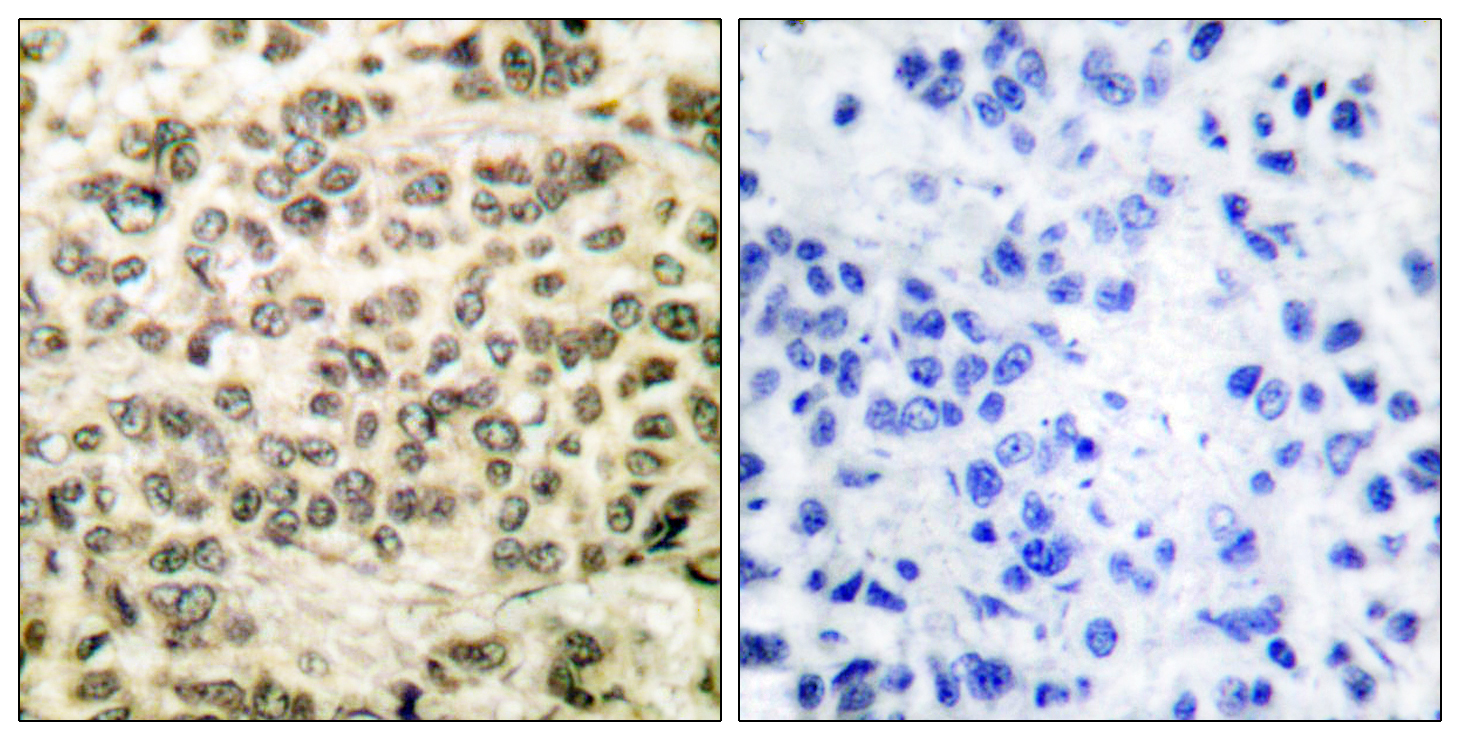
- Immunohistochemistry analysis of paraffin-embedded human breast carcinoma tissue, using HDAC3 Antibody. The picture on the right is blocked with the synthesized peptide.
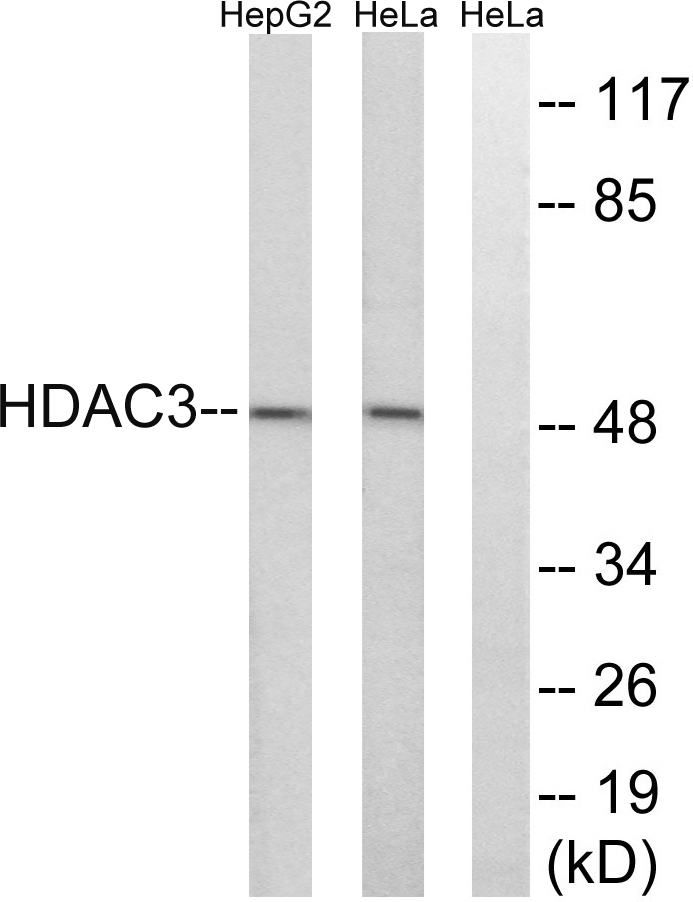
- Western blot analysis of lysates from HepG2 and HeLa cells, using HDAC3 Antibody. The lane on the right is blocked with the synthesized peptide.

.jpg)





